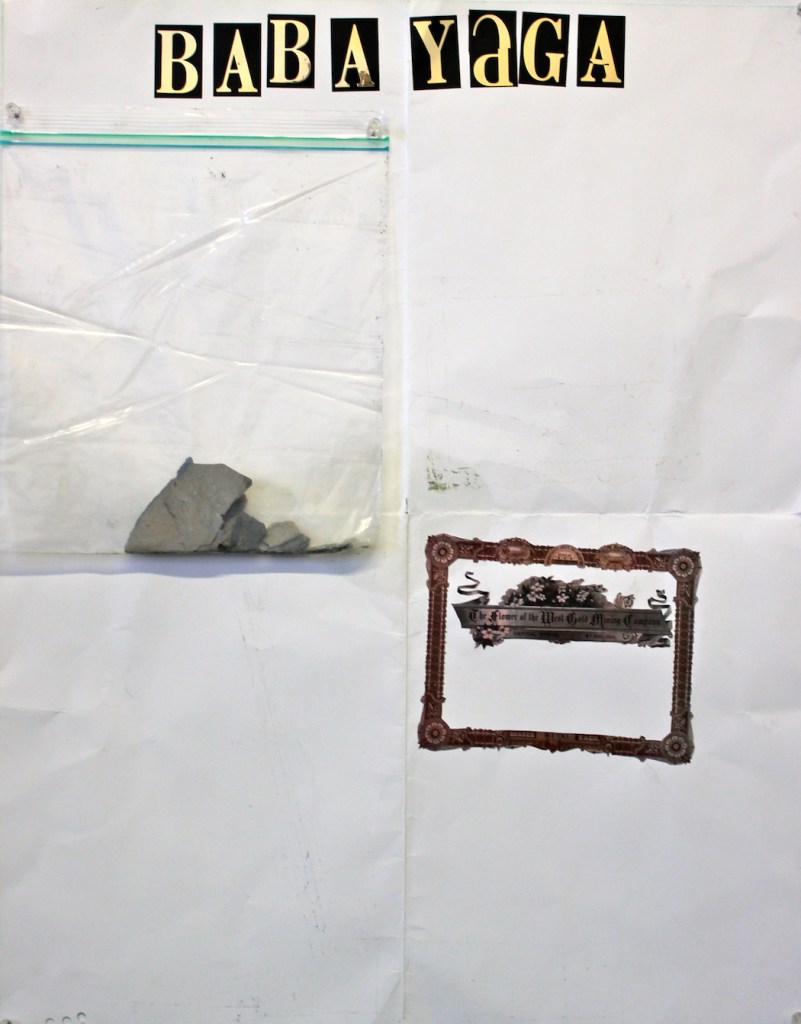Mail-art for Landlessness
Ortega y Gasset Projects (O y G) was launched in May 2013 as a gallery and curated project space in the Bushwick/Ridgewood neighborhoods of Brooklyn and Queens. Formed by artists currently living in California, Illinois, Ohio, Tennessee, Maryland, Pennsylvania, New York, and Canada, O y G operates as a cross-country collective and an incubator for artistic exchange.
In this ongoing series, different members of the collective conduct interviews in conjunction with work seen in O y G exhibitions. Here, Leeza Meksin presents a collaborative mail-art project in collaboration with artists in their recent exhibition, Landlessness, organized by Carrie Hott.
When this mail-art project was started, I didn’t yet know that OyG Projects itself was about to become landless. As covered by New York Times, Bedford + Bowery, ArtFCity, among others, the landlord of 1717 Troutman in Ridgewood, Queens (which housed numerous artist-run spaces) kicked out all the galleries shortly after Landlessness opened at OyG Projects.
“Departing from the concept of landlessness as presented by Herman Melville in Moby Dick,” Carrie Hott explains, the artist in the exhibition (Becca Albee, Amanda Curreri, Nina Elder, Pablo Guardiola, and Jennifer Nagle Myers) examined the “tension between knowing, mourning, and learning a place…”
Considering the idea of an actual space versus a lack of space – and the fact that our virtual artist collective (OyG) produces physical shows in a single concrete location – I decided to set-up a mail-art exchange with the artists involved in Landlessness, most of whom I only got to meet for the first time after the mailing interactions happened (and one who I still haven’t met).
 Each of the 6 posters I sent were 28” x 22” folded twice, making the mailer 14 x 11 inches. I purchased the posters at a Staples, three with a cyan-green gradient and three with a magenta-yellow one. I brought them home, laid them out on the floor, and tagged each with punched holes and color dots on one of the corners. Each poster cost $2.50 to ship, and always took longer than the promised time of delivery. (Perhaps one of the reasons for the decline of mail-art is the growing unreliability of the US Postal Service?).
Each of the 6 posters I sent were 28” x 22” folded twice, making the mailer 14 x 11 inches. I purchased the posters at a Staples, three with a cyan-green gradient and three with a magenta-yellow one. I brought them home, laid them out on the floor, and tagged each with punched holes and color dots on one of the corners. Each poster cost $2.50 to ship, and always took longer than the promised time of delivery. (Perhaps one of the reasons for the decline of mail-art is the growing unreliability of the US Postal Service?).
Three of the six posters I sent had clear plastic envelope/sleeves to keep them free of postage. The plastic envelopes also provided a way for the artists to include other things in the mailer, unattached to the poster. It was up to each artist to decide what to do or not do anything, before shipping it to the next recipient.
To reach my collaborators, each poster traveled to California, Pennsylvania, Puerto Rico, New Mexico and Brooklyn. Once back together, the posters were hung on the wall and photographed on both sides.
On the front side, a gradated rainbow of colors appears optimistic, almost celebratory, but the color yields an apocalyptic giddiness – a sense of drifting in an endless psychedelic landscape, a nomadic perusal of space and time (to a methodical clicking of computer keys).
Becca Albee poured incense oil, creating not just a particular scent for each of the 6 posters, but also an oil spill that blurred previous text and produced symmetrical Rorschach shapes on some of the posters, while leaving a solitary dark patch on the more empty ones.
The backs of the posters are even more ominous with smudged charcoal drawings, pieces of rocks and folded up maps; blank certificates of sale? authenticity? accomplishment?… and gold light-reflective stick-on letters, the type you find on mailboxes.
Nina Elder from New Mexico, added the blank certificates. She told me in an email, “The most important part of collaborating is that one not only relinquishes authorship… but that the elements and authorship coalesce into one process, with unforeseeable outcomes.”
Jennifer Nagle Myers, who works in Western Pennsylvania and is witnessing the fracking that is happening there right now, “struggles against a force of impending landlessness.” Her contributions to the posters evoke remnants of a shamanistic ritual at a protest rally. A ziplock bag with shale rock extracted from the ground, and shipped around the country: evidence from a crime scene (or an unwanted orphan).
Amanda Curerri, who in the Landlessness booklet asks: “…what does a landless form look/feel/act like?,” spells out names of fictional characters with the stark shiny letters on a black background. Amongst them, one of my favorite “landowners,” Baba Yaga, the Slavic witch who lives in a house with chicken legs. The legs can transport the house anytime to any place (by running). Maybe that’s landlessness.
LANDLESSNESS was on view at Ortega y Gasset Projects in Ridgewood, NY from April 19 to May 18, 2014.












There are no comments
Add yours